
Advertising does not slow down during the holiday season. On the contrary. Just ask your postman. He’s the one who has to deliver all those catalogues and flyers with all the wreathes and candles and glazed hams printed on them. On TV you can count on seeing ads showing an expensive car in a snowy driveway (but magically there’s no snow on the car) with a big red ribbon around it. “Oh, Honey!” the grateful and well dressed wife will say to her generous hubby, “All of a sudden I love you!” And then there’s Santa. Hoo boy is there Santa…
Please enjoy these animated remnants of Christmas past. Best wishes to all you folks out there!
Playhouse Christmas Card
An animated greeting from Playhouse Pictures accompanied by the music of Fats Waller. From 1958.
Timeplan Loan
Short spot from Playhouse Pictures made about the same time as the above.
CBS Santa
Produced and directed by Karl Fischer and animated by Ed Smith.
Coca Cola
Icy cold weather, icy cold friends, and icy cold Coke. Life is beautiful.
Camels
What could be better than cartons of Coke? Cartons of Camels! Give the gift of emphysema!
Christmas Card
Not a commercial, but a short film by Terry Gilliam. This aired on the Christmas episode of Do Not Adjust Your Set. David Jason can be heard at the beginning.


 Mike Kazaleh is a cartoonist and animator whose work can be seen in comic books like Bongo’s The Simpsons, Futurama and Papercutz’ Gumby – and on screen in Warner Bros. Tiny Toon Adventures, Ralph Bakshi’s Mighty Mouse: The New Adventures and Cool World.
Mike Kazaleh is a cartoonist and animator whose work can be seen in comic books like Bongo’s The Simpsons, Futurama and Papercutz’ Gumby – and on screen in Warner Bros. Tiny Toon Adventures, Ralph Bakshi’s Mighty Mouse: The New Adventures and Cool World.


































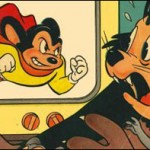
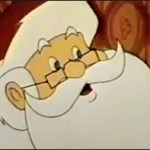
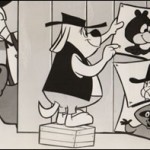
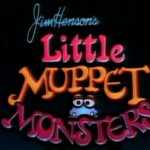
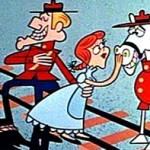

















What year is the CBS spot from?
A memory never to be repeated:Christmas packaging of cigarettes.My Dad’s store sold cigarettes and,in the ’50s,I even rang up sales at his register-28 cents for a pack of non-filters like Camels,thirty cents for filters(and PallMall).As much as everything else during the Christmas season,the festive packaging of cigarettes always added to the holidays.Lots of shiny foil cartons holding gifts of cancer and lung disease for loved ones-indeed,those were the days!.
Stan Freberg’s “Green Chri$tma$” references the use of Santa Claus to advertise cigarettes (and also Coca-Cola).
The Terry Gilliam piece is delightfully deranged and very much “of its time”. In 1968, the Smothers Brothers were constantly in trouble for stuff modern viewers would consider downright innocent today, but British TV certainly was enjoying an experimental “anything goes” mentality. All of the gun-shooting on display smells suspiciously like a (hardly subtle) “dig” at the U, S of A (i.e. two high profile assassinations, an unending Vietnam War, violence at Chicago’s Democratic Convention and racial urban riots that year). There is no way many Americans would have found that as funny as British viewers did.